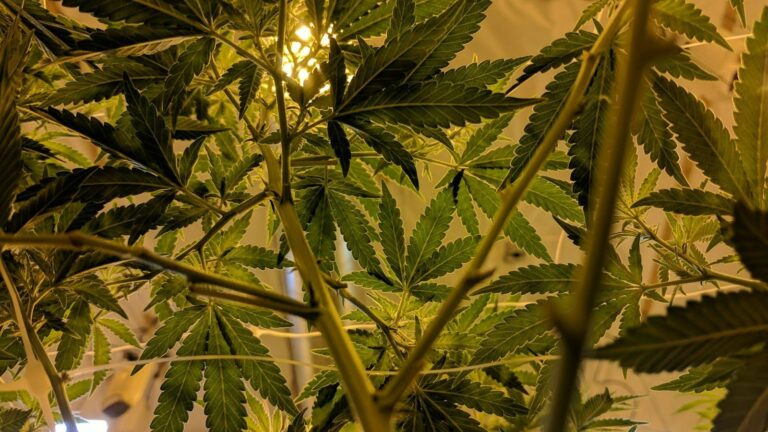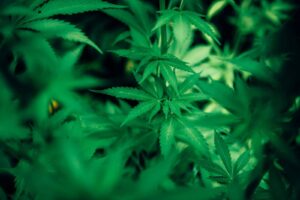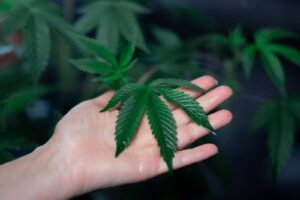If you are growing cannabis, you know that light plays a significant role in plant health and overall yield. But are you sure you are using the proper light cycle for every stage of growth?
Whether you are new to growing or a seasoned cultivator, getting the light schedule just right can take time and effort. Too much light or not enough can stress your plants, stunt growth, and even reduce the potency of your buds.
Cannabis plants need light to undergo photosynthesis, the conversion of light energy into the sugars necessary for growth and maturation.
However, they also require some darkness for energy storage and all processes outside of photosynthesis.
Achieving the right balance between light and dark, as well as light cycles for every stage of growth, leads to healthy, productive cannabis plants.
In this article, we break down how light affects growth and will guide you through optimizing your light schedule to perfect your growth. Every phase of the plant requires unique lighting.
Once you know that, you will be able to make sure that your cannabis is getting everything it needs to flourish.
This helps ensure they receive the proper light, intensity, and duration at every stage of growth to mature strong, healthy, and ready for a bountiful harvest. Proper light management is one of the most critical factors in attaining maximum yield and quality.
Let’s dig deeper into the specifics of the best light cycle for weed and how to use it most effectively at each stage of growth.
How Light Affects Cannabis Growth
As with all plants, light is essential to cannabis plants’ survival and growth. Light fuels photosynthesis, which is how a plant ingests sunlight, carbon dioxide, and water to generate glucose. The glucose allows cells to grow, resulting in the growth of new leaves, flowers, and buds.
So, what is the role of light in photosynthesis? Let’s understand.
The Role of Light in Photosynthesis and Energy Transformation
The primary energy to drive photosynthesis is light; this is the process that transforms light energy into the fuel required for the growth of cannabis plants.
Light absorption coupled with carbon dioxide and water produces glucose, a form of sugar that provides energy for plants. The glucose produced powers essential functions like cell growth, leaf development, and even bud formation.
Without sufficient light, plants cannot generate the energy required to produce robust and healthy growth.
Let’s examine how light directly impacts cannabis development and how the proper light cycle is essential in various stages.
- Photosynthesis: The plant absorbs light to convert carbon dioxide and water into glucose, which provides the energy needed for growth.
- Energy for growth: The glucose produced during photosynthesis fuels everything from cell development to the creation of leaves, stems, and buds.
- Faster growth: More light results in more glucose production, which means faster and stronger growth. The plant becomes more significant and better prepared for future stages, like flowering.
- Lack of light: If the plant does not receive adequate light, it will not produce enough glucose, leading to weak growth, fewer leaves, and smaller buds.
- Energy storage: The plant stores glucose for later use, especially when it is dark. The stored sugars help the plant repair itself and continue growing when light is unavailable.
- Light and growth cycles: The plants grow and flourish during the day, preparing for the flowering stage when they shift energy into bud production.
Are you struggling to keep up with your cannabis growth schedule? PlanaCan‘s interactive calendar helps you plan months while efficiently managing daily tasks. Adjust schedules as needed and keep all cultivation information in one place, ensuring that you are up-to-date.
Understanding the importance of light in plant growth is crucial. And understanding darkness is equally essential. Let’s explore how.
The Importance of Darkness in Improving Photosynthesis and Growth
While light is essential to facilitate the growth of plants, darkness is no exception. It may appear the opposite, but plants utilize periods of darkness to encourage growth in vital processes that no quantity of light can. Here’s how darkness is essential for your cannabis plant:
- Rest and repair: The cannabis plant breaks down sugars stored within its body in the dark period. These break-downs allow them to mend damaged tissues while preparing themselves for the next light cycle and grow more robust.
- Stronger growth: This is the period when plants recover and become resistant to future growth phases.
- Light stress: Too much light with too little darkness causes light stress, and the growth will turn out stunted, weak, or generally not well-developed.
Now that we understand the role and importance of light in plant growth, let’s learn about the lighting schedules for cannabis plants at different stages of development.
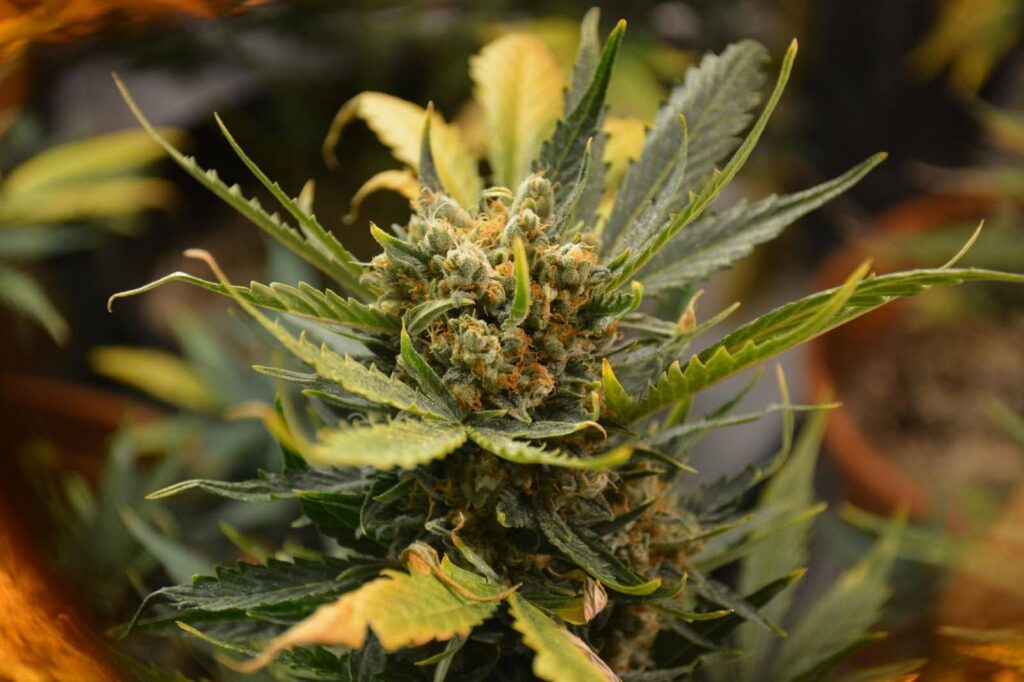
Lighting Schedules for Cannabis Growth Stages
Light is one of the most critical factors in cultivating cannabis in terms of plant health and yield. Not all light, however, is the same, and cannabis plants need different light conditions at various stages of their life cycle.
From the seedling stage to the flowering phase, the amount and timing of light your plants receive will affect their overall growth, structure, and eventual harvest.
Understanding which light cycle works best at each stage is crucial for optimizing growth and achieving the best results.
Cannabis plants experience three primary growth stages: seedling, vegetative, and flowering. Each stage has different light requirements that determine the plant’s strength and health.
By adjusting your light cycle to these specific needs, you can ensure that your plants are getting exactly what they need at each stage.
This tailored approach helps maximize plant development, reduce stress, and ultimately lead to higher yields and better-quality buds.
Let’s break down the light requirements for each phase of cannabis growth and explain how to adjust your light cycle for optimal results.
1. Seedling Stage: 24/0 or 20/4 Light Cycle
During the seedling stage, these plants are just beginning to develop. As they prepare for growth, they will create roots and stems. Consistent light is most important during this period for ensuring strong, healthy growth.
- Duration: 24 hours of light with no dark period or 20 hours of light with 4 hours of darkness.
- Purpose: Seedlings are fragile and require constant light to establish strong roots and stems, especially during the seedling stage. The early stages of growth are all about setting up a solid foundation, and constant light supports quick, steady growth.
- Benefits: Providing your seedlings with 24/0 or 20/4 lighting keeps them strong and less prone to stretching, which may result from prolonged darkness.
Roots and stems will become thicker, conditioning the plant for the next phase of vegetative growth.
2. Vegetative Stage: 18/6 Light Cycle
The vegetative stage is a significant growth phase in cannabis. During this phase, the plant focuses on building a strong structure before it starts flowering.
- Duration: 18 hours of light and 6 hours of darkness.
- Purpose: In the vegetative stage, cannabis plants focus on developing their root system, leaf structure, and overall healthy structure. Light intensifies the production of chlorophyll, which encourages photosynthesis and supports rapid growth.
- Benefits: The 18/6 light cycle provides the plant with sufficient light to induce leaf and stem growth and simultaneously offers the required 6-hour dark period for rest and recovery.
This balance prevents overstimulation and stress, thereby giving the plant sufficient time to heal and store energy for further growth.
3. Flowering Stage: 12/12 Light Cycle
The flowering stage of a cannabis plant is the stage when it transitions from its vegetative growth to producing buds.
- Duration: 12 hours of light and 12 hours of full darkness.
- Purpose: Transition to flowering requires a change in photoperiod. Cannabis plants tend to flower naturally when they receive around 12 hours of uninterrupted darkness per day, replicating the change in seasons during which daylight hours are shortening.
- Benefits: This light cycle activates reproduction in plants, which then start flowering (flower buds). The plant requires 12 hours of darkness to begin flowering.
This darkness signals the plant to shift its focus from leaf and stem growth to maximizing energy usage for flower production. An interrupted dark cycle causes the plant to fail to flower as expected and may yield poorly.
Are you struggling to keep up with your cannabis growth schedule? PlanaCan‘s interactive calendar helps you plan months while efficiently managing daily tasks. Adjust schedules as needed and keep all cultivation information in one place, ensuring no task is missed.
Here are some additional ways in which we can optimize our cannabis plant schedule.
Additional Tips for Optimizing Your Cannabis Light Schedule
In addition to light cycle adjustments at each growth stage, there are a few other techniques you can apply to make your cannabis light schedule more efficient. Here are some:
- Use High-Quality Grow Lights: Invest in high-quality weed grow lights that simulate sunlight. LED or HPS lights are popular choices for indoor growers and offer efficient, full-spectrum lighting.
- Consistent Timing: Use a consistent light cycle. The use of timers with your lights can ensure the cycle does not get disrupted and create problems from unintentional stoppages.
- Monitor Temperature and Humidity: Light intensity isn’t the only factor. Temperature and humidity can affect how your cannabis plants respond to light. Make sure your growing environment is comfortable for the plants.
- Avoid Light Leaks: Light leaks can break the 12/12 cycle and significantly diminish the yield during flowering. During this phase, the growth area must be dark.
Now that we know about lighting schedules for various stages of cannabis growth let us explore how we can monitor and adjust light accordingly.
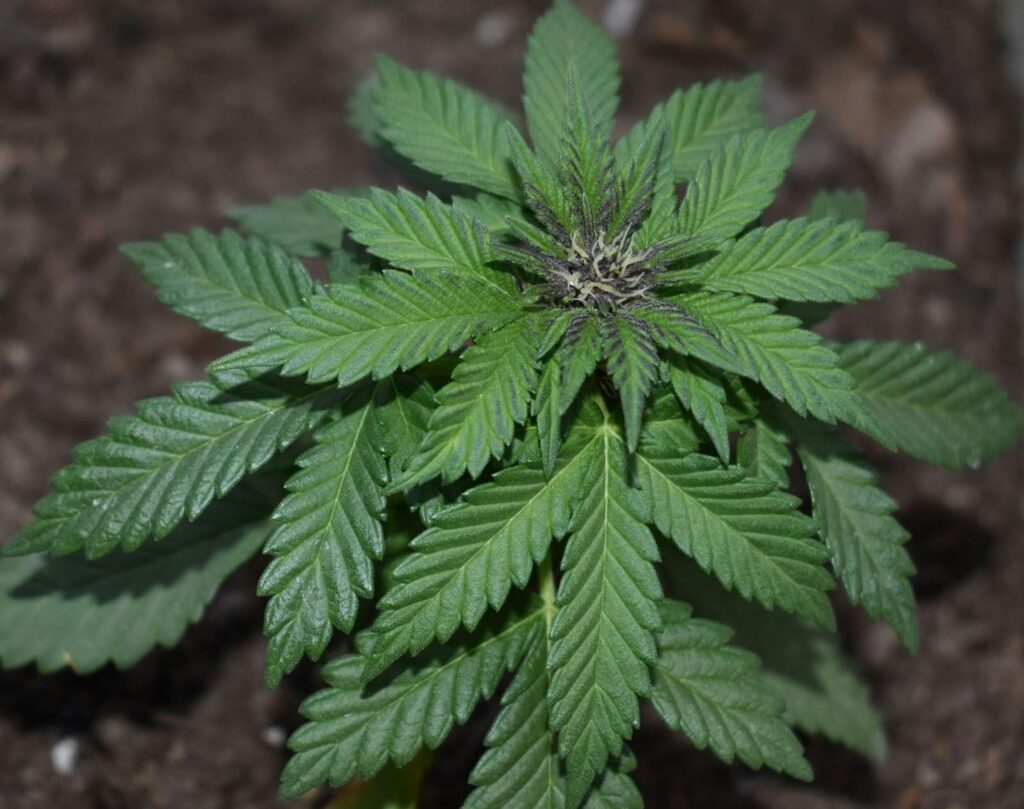
Monitoring and Adjusting Light Cycles
Adjust and monitor light cycles for each stage of development to optimize your cannabis plant’s growth.
Cannabis plants are very sensitive to light, so consistency and careful adjustments are key to maintaining healthy growth and maximizing yield.
Below are important considerations for managing light cycles:
1. Consistency is the key:
The light cycle should be maintained at the same rate each day. Even minor interruptions will stress your plants and could result in stunted growth or delayed flowering.
Cannabis responds very sensitively to light schedules, and irregularities confuse the growth process of the plant.
2. Adjustments for Stress-Free Growth:
If you observe slower growth, leaf discoloration, or other symptoms of stress, the problem may be related to the light cycle.
Too much light leads to light burn, and not enough will cause stretching and weak stems.
Adjusting the light intensity or extending/reducing the light hours might relieve stress and make your plant healthy and thriving.
3. Transition Between Growth Phases:
When transitioning from one growth phase to another, gradually adjust the light cycle to allow the plants to acclimate.
For example, as you near the end of the vegetative stage, you should gradually reduce the light hours from 18/6 to 12/12 over several days. This transition mimics natural light changes and avoids shocking the plant.
4. Light Intensity Matters:
In addition to the light cycle, you should also consider light intensity. Higher light intensity during the vegetative phase helps cannabis plants grow stronger leaves and stems.
Once the plants reach the flowering stage, slightly decrease light intensity to minimize stress while focusing all the energy on bud production.
5. Monitor Plant Behavior:
Observe your plants regularly to see how well they are responding to the light schedule. If they stretch too much or grow too slowly, your light cycle needs adjustment.
Monitoring plant behavior closely ensures that you can correct any potential issues before they negatively impact development.
Are you looking to monitor your cannabis yield in real-time? PlanaCan helps you track every harvest, capturing key decisions and their impact. With all data in one place, you can identify successful methods, avoid past mistakes, and refine your processes for higher yields and greater profitability.
6. Environmental Factors:
Temperature and humidity should support the Light Cycle. A slight drop during the dark period can even induce flowering.
Ensure constant stability in your growing conditions relative to the plant’s demands during the light cycle.
7. Use Timers for Accuracy:
Use timers with your grow lights to keep an accurate light schedule. A timer will ensure the plants receive the correct amounts of light and darkness.
This prevents disruptions that could throw off their growth cycle due to accidental interruptions.
What if you could also track your cannabis growth on your mobile device? PlanaCan helps your team communicate better by centralizing tasks and communication. Using Android and iOS mobile apps, team members can view, update, and mark tasks completed on the go. Including task-specific notes reduces misunderstandings, keeps everyone aligned, and saves time, ultimately maximizing yield.
Let us look at some considerations of lighting for other cannabis strains as well.
Considerations for Different Strains
Each cannabis strain has specific needs for its light cycles according to the genetics behind the plant.
While most strains are fine with general lighting schedules, auto flowers, and particular photoperiods require specific adjustments to grow correctly.
Let’s look at them:
1. Autoflowering Strains and Their Unique Light Cycle Needs
Autoflowering strains of cannabis are different from photoperiod strains as they do not depend on the change in the light cycle to induce flowering. They begin flowering automatically after a period of growth, usually after 2–4 weeks.
Light cycle for auto flowers:
Although auto-flowering plants do not require the 12/12 light cycle to flower, they benefit from a consistent light cycle. A general recommendation is a 20/4 or even 18/6 light cycle throughout their entire cycle.
This way, the plants get enough light for effective growth without stressing them like photoperiod plants that need very long dark periods.
Growth considerations:
Autoflowering strains usually have a shorter cycle and can tolerate slightly more light than photoperiod strains.
Using a more extended light period, like 20/4, can optimize their growth, as they can accept it without becoming stressed.
2. Strain-Specific Light Requirements for Optimal Growth
With most strains of cannabis varying ever so slightly in the basis for their light needs because of their genetics and Indigenous locales,
Sativa-dominant strains that initially originated in areas closer to the equator generally require longer cycles as those types of regions usually remain lit more consistently all through the year.
1. Indica strains:
Indicas, which are usually more common in areas with shorter daylight hours, might be more tolerant to shorter light cycles.
Indicas often thrive on the standard 18/6 cycle during the vegetative stage and quickly shift to the 12/12 cycle for flowering.
2. Hybrid strains:
Many modern cannabis strains are hybrids, combining the characteristics of both sativa and indica plants.
Depending on the dominant genetics, hybrids may require adjustments to the light cycle to achieve the best growth.
It’s essential to research the specific strain you’re growing and adjust your light cycle accordingly to ensure it’s getting the best possible light for optimal growth.
Do you struggle to track your cannabis yield? PlanaCan tracks every decision made in cultivation, identifies trends, and fine-tunes your approaches. You’ll find where things work and what errors to avoid with harvest reports all in one place.
Understanding the light cycle requirements of your specific strain, whether an autoflower or photoperiod variety, really helps your plant reach its maximum potential.
Every strain has optimal growing conditions, and minor tweaks to your light cycle can make significant differences in your final yields and quality.
Now, let us understand how we can prevent the common light issues that might occur while growing your cannabis.
Troubleshooting Common Lighting Issues
Lighting problems, such as light stress, stretching, and overexposure, can hinder cannabis growth. Knowing and correcting these issues is essential to keeping your plants healthy and ensuring a successful harvest. Here’s how to identify and address common lighting issues for optimal growth.
Light Stress and How to Prevent It
Light stress, also known as light burn, occurs when plants receive too much light. This is mainly caused by grow lights installed too close to the canopy. Leaves tend to bleach or turn crispy.
Impact on Photosynthesis: Light stress in plants prevents it from photosynthesizing effectively, which results in reduced energy production.
Photosynthesis cannot efficiently take place during light stress. Consequently, plants cannot make as much energy, and their growth slows down.
How to Avoid It:
- Ensure that your lights are at the appropriate distance from the plants.
- Apply the correct light intensity depending on the growth stage.
- Keep lights close enough, especially during flowering. At this stage, the plant is more sensitive to light intensity.
Revealing Problems Like Stretching
It is the process of growing tall, spindly plants in a quest to capture more light. This usually occurs when the plant is not receiving sufficient light or the light cycle is not perfect.
Why It Happens: If the light intensity is too low or the plants are too far from the light source, they try to “reach” for the light by elongating unnaturally.
How to Prevent It:
- Maintain lights at a distance to avoid stretching, especially in the vegetative stage.
- Vegetative growth is achieved with a light cycle of 18 hours of light and 6 hours of darkness, which allows the plant to grow robust, healthy stems.
- Techniques like low-stress training can be used to help control plant growth and distribute light evenly.
Overexposure to Light
When the cannabis plants get too much light, especially during the vegetative or flowering stage, they might experience heat stress and nutrient deficiencies. This can stunt their growth or cause other health issues.
How to Manage Overexposure:
- Make sure that your lights are at the proper distance from the canopy to prevent overheating.
- Monitor the plant’s light sensitivity. If you notice manifestations of heat stress, decrease the intensity or move the plant farther away.
Are you struggling to determine what your cannabis crop wants? PlanaCan streamlines your cultivation process through customizable templates. With just a few clicks, you can define tasks for specific strains and schedule them. This will ensure consistency and efficiency, covering every step from planting to harvest.
So, how can you ensure better yields of your cannabis using the proper light techniques? Here’s how:
Best Lighting Techniques for Maximum Yield
To ensure your cannabis plants grow to their full potential, experienced growers use several key lighting techniques to optimize light distribution and intensity. Here are a few methods that can help maximize your yield:
Light Depth and Canopy Management
Low-Stress Training or LST: Tends the plant’s stems gently sideways to spread branches out and form a uniform canopy.
SCROG (Screen of Green): In this method, branches are trained to grow out horizontally over a screen or net.
Light Distance and Intensity
Proper Distance of Light: The distance between your lights and the canopy of your plants is crucial. If your lights are too far away, your plants will stretch for light, and if they are too close, light burn can occur.
Adjusting Light Intensity: Light intensity should be adjusted according to the plant’s growth stage. Stronger light can be beneficial during the vegetative stage, and less intense light can be helpful during the flowering stage.
Conclusion
Understanding your marijuana plants and adjusting their light cycles during different growth stages can prove critical for their maximum health and yield.
Light affects everything: the timing of the onset of flowering, rates of photosynthesis, and the way plants grow. Having the proper light schedule at the right time can make all the difference in yields.
Plants need to be exposed to more light hours during the seedling and vegetative stages to establish strong roots, strong stems, and healthy leaves.
However, when they reach the flowering stage, shortening the light to 12 hours a day can prompt bud production and focus energy on producing quality flowers.
Managing these various strains can be cumbersome, as it requires monitoring all the changes and synchronizing everything.
This is where a comprehensive system can help simplify the process, saving time and improving overall plant health.
PlanaCan offers an effective solution to simplify this process. It lets you create customized templates for each stage of your cultivation process, automating tasks and ensuring consistency. It also allows you to easily plan and track your tasks, giving you a clear visual timeline and the ability to adjust as needed. This centralized approach ensures everything is noticed, keeping your growth operation running smoothly and efficiently.
Learn more about how PlanaCan can help optimize your cannabis cultivation, and Schedule a free call today.

